
|
|
EFFECTIVE FOCUSES AND THEIR CLUES Focus with the appearance in the hands of 14 balls. Focus Secret
Directory / Spectacular tricks and their clues Focus Description: Repeatedly, illusionists have made an attempt to increase the number of balls with which they operated. Some magicians showed the appearance of a huge number of balls, but this was achieved not by manipulation, but by purely mechanical means - with the help of all kinds of racks, specially designed holders. As soon as the magician touched such a holder, a whole ball appeared in the stand, which was a half of the ball, the "shell"; in fact, the "shell" from a horizontal position became vertical, which created the illusion of the appearance of a ball. The solution of the trick in a manipulative way did not go beyond the appearance of eight balls, this was considered a record number. "Eight balls! And for more, even fingers are not enough!" - said the performers of this trick and considered themselves a kind of champions. So it was until 1957, when the world of illusionists was shocked by an interesting message: an unknown illusionist Ron Macmillan in Scarborough (England) at the annual conference of the "International Brotherhood of Magicians" took pride of place and received the first prize for the manipulation he showed - the appearance in the hands fourteen balls. Among the judges were the most experienced illusionists, but they were also at a loss: where did the balls come from? After a special performance at London's Victoria Hall, Ron Macmillan's tour of Europe followed. In 1961, at the international congress in Liege, he took second place, losing the championship to the multiple winner of international competitions Fred Kaps, and in 1963 he won first place at the Scandinavian congress. Now Ron Macmillan has become a recognized master of the world class. How is the world popularity of the artist achieved? The answer is simple: Ron Macmillan, having a remarkable technique of manipulation, came up with a completely new method of feeding the balls into the hand by making original holders. The session with the appearance of the balloons is very well described in L. Ganson's book "Macmillan's balloon symphony", published in London. From it we give a description of the main points, simplifying the text. Focus secret: It should be borne in mind that Ron Macmillan is left-handed, therefore, when studying the above figures, it is necessary to take this into account. Holders "R. M." * The advantage of these holders is that they covertly deliver the ball into the palm of the hand, which the audience sees all the time. The hand simultaneously palms and places the balls. No cover is applied during the show. The hand can be shown on both sides, for example with two balls, and after a moment a third may appear between the fingers. * ("R. M." - Ron Macmillan for short.) Each holder of "R.M." serves only one ball, but this does not mean that for the appearance of fourteen you need to have the same number of holders. Six is enough, and the remaining eight balls are obtained in other ways. Almost imperceptible through holes are made in the balls, passing through the center, so they can be put on a wire rod - holder. Holder "PM" - consists of the following parts (see Fig. 125 and 126): A - mechanics, B - needle with a finger ring. The mechanic is a tube with two soldered plates that are pinned or sewn with thread to the suit. A rod is tightly attached to the bottom of the tube - a thick wire with a hole.
A spring is put on the rod; if you squeeze it, then the needle will freely pass into the hole in the rod. Mechanics are placed under any hollow jacket. On fig. 127 four holders with balls are visible, located next to each other under the lapel. Macmillan shows their location by slightly opening a black thin strip of material that covered the balls (they are not visible to us, even if the floor is slightly ajar). If only one holder is used, then it is located in the center. The four ball trick only needs one holder, the eight and fourteen ball tricks require 6 "PM" holders.
Charging holders. Put the ball on the rod and press the spring with it; insert a needle into the hole that appears (see Fig. 125). Now, if you pull it on the ring, the spring will push the ball out, delivering it right into your hand. The ring should be painted black and unnoticeable even up close. The fabric holder for other balls (Fig. 128) is simple in design. Balls from it fall by themselves under the pressure of their own gravity. The bag can hold one ball or more.
An interesting holder for two balls (Fig. 129). A rod is attached to the safety pin and a thin rubber loop is tied, the end of which is put on the rod over the balls put on it. Light downward pressure and the balls fall into the hand. To prevent the holder from being visible, a black tire measuring 7,5x15 cm is used. Ron Macmillan, as we noted, is left-handed (this is also noticeable in the figure). We give a description of tricks for a performer who has a better developed right hand.
Focus with four red balls. Preparations. A simple holder is loaded with one ball (placed at the top right of the floor). One holder "R.M." located on the left side of the jacket and another simple holder for two balls - on the left, at the top of the floor. manipulation techniques. 1. Unnoticed, the ball is taken out of a simple holder (on the right, at the top of the floor) into the right hand. This is easy to do if you simultaneously put something from your left hand on the table on the right, with the body half turned to the right. The ball is imperceptibly hidden (palmated), then shown. 2. The ball can appear between the thumb and forefinger or any fingers. 3. Pretending to put the ball in your left hand, hold it down, and when you open your fingers, the ball "disappears" (it remains palmed in the left hand). 4. Standing facing the audience, bring your right hand to the right lapel of your jacket, then take it down a little so that the ball rolls and falls between the thumb and forefinger (Fig. 130). Move your left hand, which is at the hip, forward a little to touch the elastic band on the holder with it. Having freed the elastic, get two balls at once: one in the fingers, the other in the palm. When you take out the balls with your left, look intently down at your right hand. The face is turned towards the audience. Keep your left hand at your hip and "catch" two balls in any way.
5. Place the visible ball between the right ring and little fingers. Keep both hands at hip level (Fig. 131). With your right hand at hip level, make a throwing motion, taking a visible ball from your fingers into your palm, and at the same time show the ball held between your fingers in your left hand between the little finger and the ring finger.
6. Raising your right hand, take the visible ball between your thumb and forefinger. Stretch out your left hand and show the other ball (which was in the palm of your hand) between the little finger and the ring finger. Turn the left hand with the palm facing the audience and transfer the ball from the right hand to the left, between the thumb and forefinger. Your right hand covers your left palm, pass the palmed ball from your right palm to your left. Then, covering with the right hand, turn the left and immediately take two balls from the left to the right between the little finger and the ring, ring and middle. 7. Continuing with technique 6, move your right hand to the center of the right floor, palm towards the audience. Then turn your back to the audience and hook the loop with the tip of your middle finger near the left hem of the jacket. At the same time, the left hand palms the ball between the little finger and the ring finger. The loop is not yet pulled out, but this movement is used (working with the ball in the left hand) to hide the index finger from entering the loop. On fig. 132 clearly shows the position of the hands.
Leaning your body forward, move the ball into your left hand and catch it. At the same time, pull the loop so that the ball from the holder rolls into the right palm. Then move the ball between your thumb and forefinger. Here again a distracting feint is used to hide pulling the noose and receiving the ball in the right palm. A light push of the right hand back forms a path along which the ball rolls out from under the edge of the floor into the right palm (Fig. 133). The right hand is moved away so that the ball is visible (it is pressed with the middle finger only for photographing).
8. Put your hands together, take one ball from your right hand and place it between the thumb and forefinger of your left hand. And place the other ball from the right between the index and middle. Looking at the three visible marbles in your left hand, place the fourth marble between the two fingers of your right hand. The fourth ball appears unaccompanied by the usual movement of the hands (to the floor or to the bottom of the jacket). After knocking three balls in your left hand and one in your right, insert the fourth ball into the free space between the fingers of your left hand. If you end the number with this, showing four balls, then make them disappear one by one in the way you know. Or, proceed with the continuation of the eight-ball trick, starting with technique 9. Trick with eight balls. Preparations. Three additional holders "R. M." placed like this: two on the left side of the jacket and one on the right. The belt holder (Fig. 134) is made of black material 10 cm wide and 23 cm long. The top and bottom are sewn up. The edges are overcast and an elastic band is passed inside. The holder is put on the lower back at the lower edge of the vest. Two balls are pushed under the elastic to the bottom, where they lie side by side in a kind of pocket.
We have already indicated the location of the nine balls, speaking of the holders. We continue the description of the trick from the moment when four balls are placed in the left hand. 9. After a short pause to show the balls in your left hand, bring it to your mouth and take the ball that was between your thumb and forefinger with your lips. Bring your right hand to your mouth, covering the ball with your palm, push your palm towards the ball (actually palm the ball in your hand). Make a movement with your lips, as if the ball is taken into your mouth, support your right cheek with your tongue, giving the impression that there is a ball behind the cheek. Bring your right hand to the right side of your face, pointing with your index finger at the bulge of your cheek. Make a swallowing movement and lower your left hand to the middle of the belt, while at the same time making a "walk" with the fingers of your right hand down to the right field of the jacket. Insert the thumb and forefinger of the left hand under the belt, quietly grab the ball on the right side, lift the elastic so that the other ball from under the belt falls into the left palm, where it can be hidden (Fig. 135). The photo shows that the floor is taken away with the other hand, so that you can more clearly see how this is done. Holding the left hand with the four marbles back to the audience, stare at the marble taken from the belt and drop it between the thumb and forefinger (towards the base of the thumb). This will close the gap between the fingers and will not allow you to see the palmed ball.
10. Slightly turn the body to the left, at the same time turn the left hand high with the back to the audience. Touch it in front with your right hand. Take out the ball palmed in the left hand with any two fingers and place it at the fingertips of the same hand (Fig. 136).
Keeping the hands together, quickly turn the left under cover of the right and do an exchange palming, taking the ball palmed in the left hand into the right palm. Gaze at the marble just placed between your left thumb and forefinger as you make this exchange. Place the ball from the right palm between the two fingers of the right hand (Fig. 137).
11. Looking straight ahead, take a step forward, mix the balls. Then toss up and catch the ball with your right hand between your thumb and forefinger. Both hands are turned with their palms towards the audience (Fig. 138).
Step back and at the same time turn both hands back to the audience. Cross your arms, placing the left over the right at chest level. When the arms reach chest level, hook the loop of the "PM" holder with the right middle finger and pull it (Fig. 139).
So the ball falls into the right palm. Press your hands harder to get a palmed ball from the left side of the jacket. Move your right hand to the right, thereby allowing the palmed ball to roll behind the jacket and appear between the index and middle fingers (Fig. 140).
12. Looking down at the balloon that has appeared, spread your arms, turning your right hand so as to show the palm to the audience. Move the two balls between your fingers (this dispels the public's suspicion of tricks and "stashes"). As the balls roll between your fingers and you are staring at them, grab the loop of the R.M. holder with the tip of your left middle finger. on the right side of the jacket, but do not pull it yet. Keeping the left hand in front of the chest, bring the right hand close to it and take the ball located between the thumb and forefinger of the left into the right hand between the index and middle. Show the audience the right hand. Then take out another ball, sandwiched between the thumb and forefinger of the left hand, thumb and forefinger of the right (Fig. 141). At the same time, pull out the loop, with your right elbow lightly pressing down on the floor of the jacket and letting the ball out of the R.M. holder. slip into your left hand.
13. Lower your right hand down, across the body, under the left hand. When the right one rises behind the left, and the hands intersect, the ball is pushed into the left palm and rolls along the back of the right hand to the position between the left thumb and forefinger (Fig. 142). 14. Show the balls, and if this ends the number, then in any way make the disappearance of all eight balls. Or continue the trick by showing the appearance of fourteen marbles. Trick with fourteen balls In this third, final part, colored balls are introduced. Therefore, it is necessary to study not only the placement of additional holders, but also to see how the balls should be correctly placed in their places. Preparations. Now we need four "PM" holders (instead of two) on the left side of the jacket and two holders on the other side (instead of one). At the top is a yellow ball, the two middle ones are red, and the bottom one is green. On the other side, one white and one red. You will need two more simple holders, each for one ball, they are placed under the skirts of the jacket, one on each side. The outlet of each holder is facing downwards. White balls are placed in each of these holders for photography only. But they can be placed at the request of the performer. The left palm is held over the ball at the cut of the lapel on the left side. The ball is pushed down from the holder and rolls along the body, after which it is easily palmed. Do the same with the ball in the right holder. The top of Ron's pocket holder is sewn to the top of his left trouser pocket (left-handed). This black fabric pouch has an opening on the right, next to the entrance to the pocket itself. It contains only one ball, which is held by the friction of the floor of the suit. By pressing the ball from above with your palm, you push it to the center of the palm (Fig. 143 shows placement in a pocket holder). The black ball is invisible. The bag is marked with an arrow in the figure.
15. We continue the trick by showing eight balloons (the right hand, facing the audience, is at the chest, and the middle finger pulls the loop so that the yellow balloon falls into the right palm (at the same time, the left hand distracts attention - the balloons move in it). Turn then the left hand with the back to the audience, look at the last (eighth) balloon, then move the right hand over the left (which is pressed to the chest) and palm the yellow balloon.Put it forward and opposite the red balloon between the left thumb and forefinger, move it like this so that it falls between the left palm and chest.The yellow ball is simultaneously taken with the thumb and forefinger of the left hand, in the very hollow the yellow ball replaces the red one in order to create the illusion of a change in color if the hand is moved to the side.Look at Fig. 144, in which shows the exchange of two balls (front view, arms moved away from the chest to make it easier to photograph).
16. Turn to the right and raise your right hand (back to the audience) to show the balloons. Then raise your left hand, bringing the palmed red ball against the back of your right hand, which simultaneously turns behind the red ball to place it between the right wrist and the tips of the thumb of the left hand (as shown in Fig. 145).
17. After a short pause, continue to roll the red ball so that it falls between the tips of the thumb and forefinger of the left hand, above the yellow ball, at the base of the thumb. After that, turn to face forward and after a pause, bend both arms at the chest - the left above the right (Fig. 146), so that the tip of the middle finger falls into the loop of the lower holder on the left side to deliver the green ball to the right palm. Look at the yellow ball as you raise your right hand over your left, until the green ball falls into the hollow at the thumb of your left hand under the red ball; the yellow ball is pushed out, falls into the left palm and is carried near the chest in order to be palmed.
18. Continue moving the right arm up, then down (in a circular motion across the body to the right). Start moving the left hand also in a circular motion so that it goes over the right hand and so that the yellow ball can be pressed against the red ball between the thumb and forefinger of the right hand. The red ball falls into the right palm (while making an imperceptible movement with the chest), and then the yellow ball goes into the hole at the thumb of the right hand (Fig. 147). The arms are moved away from the chest so that movement can be seen.
19. Both of them are shown with the back to the public. Then bring your left hand near the body and the tip of the middle finger is inserted into the loop of the last "PM" holder on the right side (but do not pull yet). Pass your right hand over the back of your left wrist, and roll the palmed red ball over the back of your left wrist to the tips of your right thumb and forefinger above the yellow ball. When the balloon appears, pull the loop of the holder to get the last white balloon into your left palm. 20. Pass your left hand over your right and make another color change; the palmed white ball in the left hand is pressed against the yellow one to take its place in the hole at the right thumb (when the yellow ball goes to the right hand). Move your hands back to the audience, away from the body to the left, then turn your left palm and show the balls. Throw the red ball with the tips of the thumb and forefinger of the right hand into the air and catch it on the inverted left palm so that it reaches the bases of the last three fingers. When the middle finger is slightly bent, the ball is placed at the middle and little fingers (as indicated in Fig. 148).
Slowly turn your left hand to move its back side up and thus show the six marbles that it holds. Then bring your right hand, supporting it over your left hand, and place the palmed yellow ball on the upper knuckles of the index and middle fingers of your left hand, leaving the rest of the balls in place. Display these seven balloons (fig. 149) by moving your hand left and right so that the audience can see clearly.
At the same time, lower your right hand to the right pocket of your trousers (Fig. 150) and squeeze the black ball into your palm from the upper pocket holder (in fact, it is pushed out by a white ball that you hold firmly between the thumb and forefinger of your right hand).
21. Keeping your left hand high, bring your right hand just below your left; tilting your left hand, you allow the yellow ball to fall into place, at the tips of the thumb and forefinger of the right hand, above the white ball (Fig. 151).
Showing your left hand, turn it, pressing it to your chest, with the back to the audience. Raise your right hand over your left, pressing the black ball palmed in your right hand against the green one. Make a color change by placing a black ball in place of the green one (at the hole of the left thumb) that goes into the left palm. At this moment, the red ball is at the tips of the thumb and forefinger of the left hand, the black ball is below, in the hole of the thumb. 22. Pause. The right palm is facing the audience. Bring your left hand to it and move the red ball from the tips of the right thumb and forefinger (which are under the black ball) at the base of the right middle and little fingers, where it can be directed with the slightly bent index finger of the right hand (Fig. 152).
Looking down at the right lapel, bring your right hand to your right thigh (above the simple jacket holder); reaching the chest with your left hand (back to the audience), roll the palmed ball from the lapel with your thumb to an empty space, between the tips of the thumb and forefinger of your left hand, on top of the black ball. When the ball appears, push it out with the base of your right thumb and roll it out of the holder so that it can be held against the palm of your right hand, then palm it. Rice. 153 shows the position of both hands at this time.
23. Move both hands away from the body. After pausing for display, then swing your right hand up and down, holding it with the back facing the audience, at the same time place your left hand on the simple holder on the left side of the jacket and press the ball out of the holder with the base of your thumb into your left palm.
Holding the right hand with the back to the audience, place it as shown in fig. 155.
With your left hand, palm the ball from the back of your right hand. Lower your left hand slightly so that the palmed ball rolls between your hands and ends up between the bases of your thumbs (Fig. 156).
Indicated in fig. 156 the position of the hands allows the left thumb to turn towards the right palm (fig. 157) to roll the ball into the palm (it should land near the first ball, as shown in fig. 158).
Turn your face forward and show 14 balls, as shown in fig. 159. This is the finale of a wonderful manipulative trick that brought its author, Ron MacMillan, international recognition as an outstanding manipulator.
As in all tricks, the main thing here is the ability to perform a number well, artistically. This is precisely the main "secret" of illusionary art. The trick is described by us exactly as it was performed by Ron Macmillan, who simplified the movements so much that they can now be performed by any manipulator with an average technical background. You just need to practice hard. The location of all holders can be done in your own way, placing them in a way that will be convenient for the performer. Author: Vadimov A.A.
Artificial leather for touch emulation
15.04.2024 Petgugu Global cat litter
15.04.2024 The attractiveness of caring men
14.04.2024
▪ Triple Differential Receiver AD814 ▪ Efficient quantum dot solar panels
▪ site section Welding equipment. Article selection ▪ article Flat sharpness. Popular expression ▪ article Why are not all clouds rain? Detailed answer ▪ article The functional composition of Futic TVs. Directory ▪ article Laser phone. Encyclopedia of radio electronics and electrical engineering ▪ article Luminous ball. Focus Secret
Home page | Library | Articles | Website map | Site Reviews www.diagram.com.ua |






 Arabic
Arabic Bengali
Bengali Chinese
Chinese English
English French
French German
German Hebrew
Hebrew Hindi
Hindi Italian
Italian Japanese
Japanese Korean
Korean Malay
Malay Polish
Polish Portuguese
Portuguese Spanish
Spanish Turkish
Turkish Ukrainian
Ukrainian Vietnamese
Vietnamese


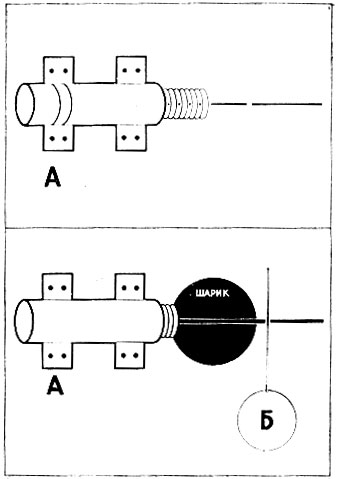






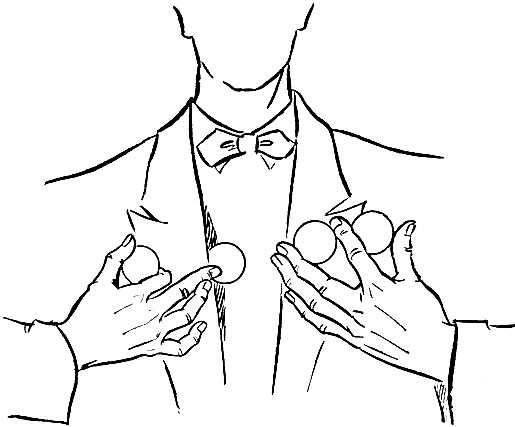


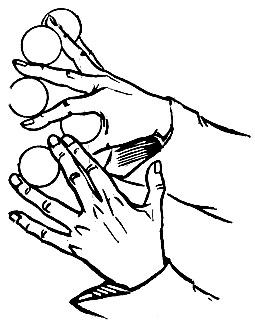

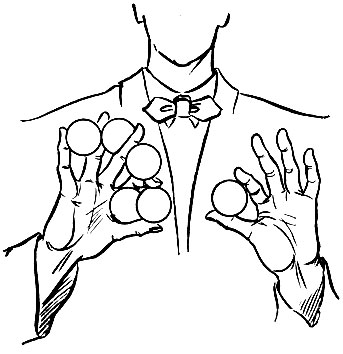
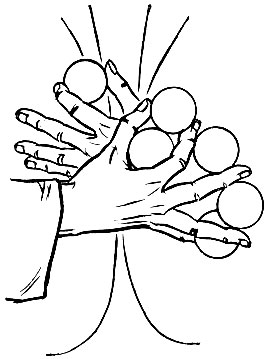
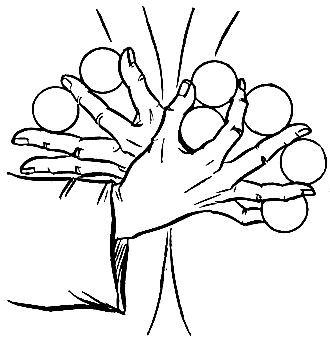

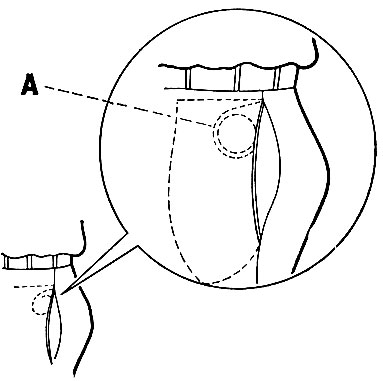


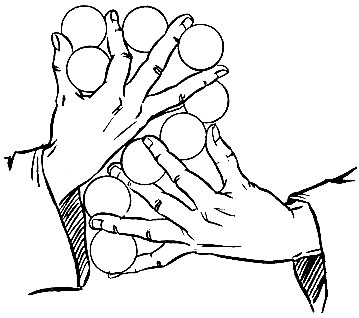

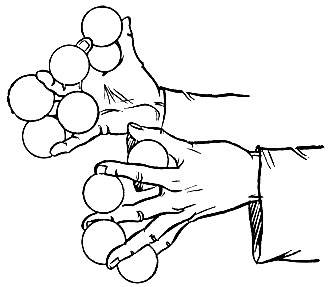
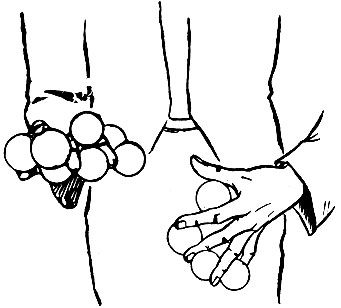
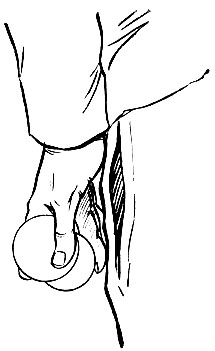
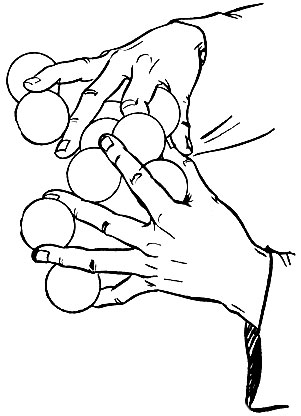

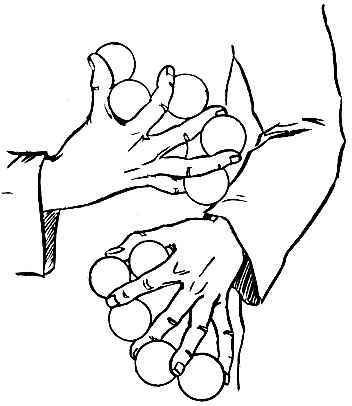





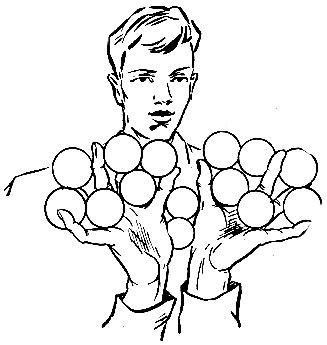
 See other articles Section
See other articles Section 